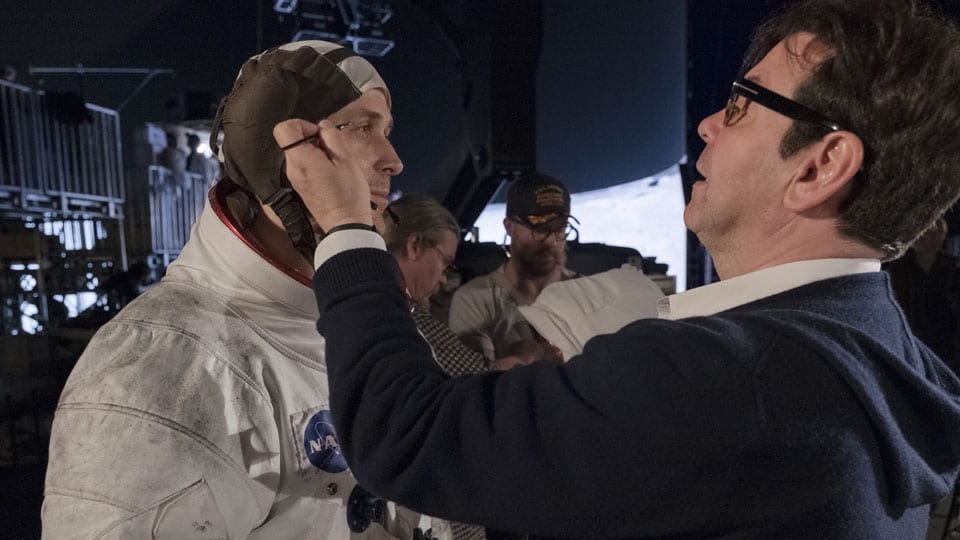
In the Dreamworks Animation‘s action-packed Kung Fu Panda 2, Jack Black reprises the role as Po, the rotund Martial Arts Panda. Much of the crew also returned to work on the sequel, including director Jennifer Yuh Nelson, who was elevated from the story department to helm the film. Telling a darker story than that of the original film, the newest installment of what looks to be a continuing creative franchise, explores themes of family and identity as Po takes on his old enemy, Lord Shen (Gary Oldman). With an all-star cast voicing the characters, an Asian-influenced artistic style, intensely complex chase sequences and a series of Kung Fu fight scenes that rival their live-action counterparts, the film succeeds in engaging both children and adults alike.
Below the Line: You must have gone crazy with all the work getting this film out.
Jennifer Yuh Nelson: It was pretty crazy, but all good. Very fun.
BTL: What was it like directing the sequel to a film another director spearheaded?

Nelson: The first show was such a collaboration with everyone on the crew that it didn’t feel like it belonged to any one person. It was a crew passion project. For me, it wasn’t necessarily picking up another director’s project. It was a project that we had and loved. So, it really was quite seamless. It was the same crew that I worked with before. We worked very well together. It was very, very easy.
BTL: You were story artist and head of story on the original film. Did you help design the look of it, including all those 2D memory pieces? Who were the key collaborators in deciding the look?
Nelson: The look was designed by production designer, Raymond [Ramone] Zibach, and art director, Tang Heng. Those two people carried through both movies. Ramone’s vision of how the movie looks is that super-stylized, but still very detailed, realistic world. I work very closely with Ramone. We talk about what the story requires. We sit and work out the emotional impact these moments have to have. So, the beauty that comes out in his design is about stirring emotional things.
BTL: You’ve basically worked up from the ranks as a production illustrator, assistant designer and storyboard artist. How does that experience inform your work as a director and help you communicate your vision for the film?
Nelson: It helps immensely, because I’m very visually based, and it is a visual medium. It’s much easier for me to explain my ideas to the crew since I know the process. I know the steps involved, and I know how to tell the story visually. That made it a lot easier for me as a director. It was a very shorthand way of communicating with people. I could just sketch out what we’re talking about. That sort of clarity is something a lot of the crew really appreciated.
BTL: If you could only have a handful of people on your crew, who would that be?
Nelson: There were so many great people on the film who did great work, particularly Nico [Nicolas] Marlet, an amazingly talented artist who did the character designs for the first and the second movies. He gets such a full consistent, stylized work because they are all based on these illustrations that he makes on actual paper. In a world where a lot of us work digitally, to see something on paper is quite a treat. There’s no undo button for that stuff!
And then there was the martial arts animation and choreography that was done by Rodolphe Guenoden, an amazing animator. He gets the authenticity in the martial arts sequences.
BTL: Did you do live-action reference to get the moves?
Nelson: We did some live-action reference. The reference that they shot was the animators themselves in a room. It’s purely for them. It helps them communicate with each other about what moves they want to do, and gives a guide for some of the animators to sketch out the subtlety of some of the moments.
BTL: Sound design is such an important element in animation. It has to be completely fabricated.
Nelson: Those are the same guys that also did the first film, sound designers, Erik Aadahl and Ethan Van der Ryn. They are just amazingly talented. They went beyond trying to find really exotic sounds for some of the more exotic elements of the movie with the cannons and getting the fight sequences to sound really cool.
BTL: Back by popular demand?
Nelson: That’s the thing with the crew, a lot of the same players came back because we all loved the first film so much.
BTL: I was amazed by the amount of action in the film. Did the 3D give you any problems? I’ve heard that you shouldn’t do fast cuts, but I didn’t feel any of that head spinning on this one.
Nelson: That’s something we had to develop working on this, because, it’s true. People say you can’t cut fast with 3D or you can’t do certain things with 3D. But we said, “No, we’ve got to figure out how to do it.” Our head of layout Damon O’Beirne really worked through it to find a more natural way of applying the 3D. The freedom to cut as fast as we wanted to, allowed us to reinforce the emotional beats with 3D. Usually you think of 3D as being an action tool, but it was very useful for reinforcing the emotional moments of the movie as well. We tried very much to give it a realistic painterly feel, like how you would experience it in real life.

Nelson: I would talk to them about what the sequences required, and what the movie was trying to say. If we talk about that, then we can talk about something visual that’s actually being reinforced by the audio. They are just so talented in what they do, that they could glean a direction for the music from my explanation of what a moment is about. This is where the emotional hit happens. This is what the character is trying to achieve. This is the feeling you’re supposed to get. They could translate that into a musical soundscape. But it was also a challenge because of the fact that it’s a sequel. You don’t want to repeat yourself. You also want to build a particular creative identity for it. They did an amazing job.
BTL: Who did you work with to capture the vocal performances from the actors?
Nelson: We worked with Carlos Sotolongo. There were a lot of people over there, and they were basically all the same folks from the first movie. Carlos was on the first movie as well.
BTL: Tell me about working with the actors in the voice-over sessions to build the characters. All the animation is based on those performances.
Nelson: We have the script, and then we have the actors perform. Their ad libs really explore the moment. The animators take those lines and work off of those.
BTL: How did you get the great performances?
Nelson: It is very easy because the actors are amazing. Still, whether there is a seasoned actor, or a fresh person just trying out for a background character, the methods are the same. You try to get the actor into a certain mind-space so that they can lose themselves in that character at that moment.
BTL: Generally actors in animation record on their own lines separately. Did you have any of them come in together, to bounce the comedy off of each other?
Nelson: They would usually be in there alone. We would have an actor to read against, so they don’t feel like they are talking to themselves. Certainly it’s always good to have someone to perform against, but for technical reasons we usually like to have them separate.
We did have Jack and Gary together at the same time to do a sequence. We played it, explored about. That was really cool. It was the sequence when the bad guy and the good guy meet face-to-face for the first time, up in the tower when Lord Shen meets Po. Getting those guys in the same room is quite a thing.
BTL: Did anyone go above and beyond the call of duty?
Nelson: I think really one thing that’s very uncommon in the process is the role of the story crew. We had a head of story, Phillip Craven, and a very small group of very talented artists that made a visual script – an animatic off of which the other departments worked. That small group of artists is really integral to developing the characters and the story, as well as what emotional beats hit and which gags hit. Those guys in the storyboard department are almost never noticed.
I could mention every single person on the crew. One thing that I really want to stress about the film is that the level of collaboration with everyone was so intense. It’s good because everyone considered this a passion project. I couldn’t ask them, or force them, to do the level of work that they did. They did it on their own.







